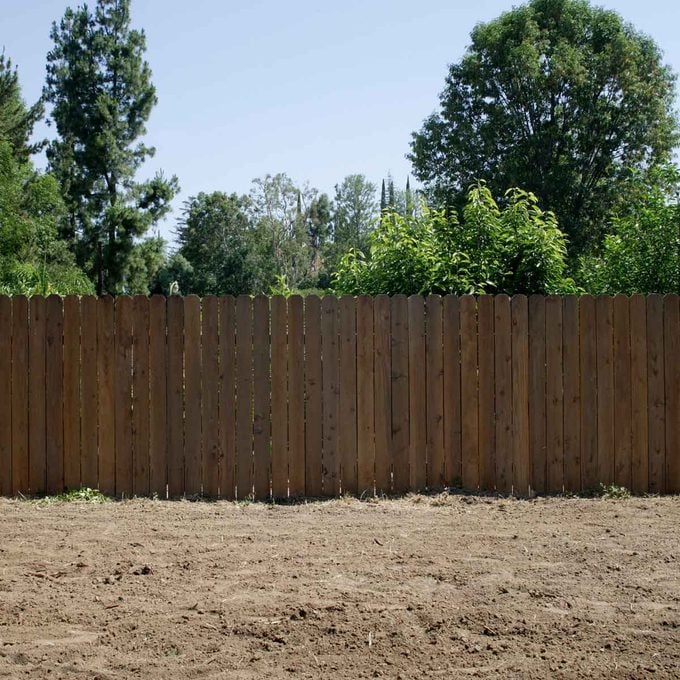How (and Why) to Purposely Kill Your Grass
Updated: Mar. 13, 2024
If your lawn looks completely hopeless, it might be time to start from scratch.

When your lawn is overrun with weeds, spot-spraying or pulling them by hand might seem like a good idea. But at a certain point, it may be better to cut your losses and simply start over. The rule of thumb is this: If your lawn is 50 percent or more bare ground and weeds, it’s best to kill off the entire lawn and replace it with new grass.
Killing your entire lawn gets rid of everything — grassy and broadleaf weeds, off-type lawn grasses and the few strands of good grass you have left. But after killing your entire lawn, what remains is a grass- and weed-free surface that’s ready for its face-lift. Removing all vegetation also allows you to smooth any unevenness, correct drainage issues or reduce soil compaction problems.
It’s also a great time to upgrade your in-ground irrigation or to install a system if you don’t have one. But most importantly, by starting over you have a chance to introduce new and improved lawn grasses that require less water, fertilizer and chemicals. Mother Nature will thank you.
On This Page
How to Kill Grass
There are four main ways to kill all the grass and weeds in your lawn. They require varying degrees of expense, time and effort.
Weed Killer
The easiest, quickest and most effective way to kill off your lawn is to spray it with glyphosate, such as Bonide Kleenup Weed Killer Concentrate. It needs to be mixed with water before using, but there are ready-to-use options available as well.
It’s worth noting that although glyphosate has been under scrutiny for possible toxicity, a recent review by the Environmental Protection Agency (EPA) concluded there are “no risks of concern to human health when glyphosate is used in accordance with its current label.”
If you’re OK with using conventional herbicides, this is a great option, which should take about 10 to 14 days for a complete kill. Remove as much of the dead weeds and grass as you can before reseeding or sodding. This can be done with a bow rake or leaf rake.
One word of caution: Be careful not to use “extended control” versions of weed and grass killers. They include other chemicals that leave a residue in the soil for up to four months and will prevent anything from growing, including the seed you sow or sod you lay.
Vinegar
You can also try an organic approach to chemical control by applying a horticultural vinegar such as Green Gobbler. Unlike the five percent household vinegar used in the kitchen, horticultural vinegar is usually 10 percent to 20 percent acetic acid. Acetic acid “burns” the weeds away, so wearing gloves and other protective wear is a good idea to avoid contact with skin. These products are ready to use right out of the bottle. Horticultural vinegar works well but can be expensive.
Plastic
If you prefer a completely chemical-free method, try covering your entire lawn with heavy-duty black plastic.
Start by setting your mower as low as you can. Scalp down your lawn, remove as much grass and weeds as possible, then immediately cover the lawn with plastic. Anchor the edges with sod staples, boards, bricks or other heavy items that will keep the plastic from blowing away. Depending on the time of year, you’ll need to leave the lawn covered for six to eight weeks, so the sun’s heat and the lack of rain can do the rest. Once the grass is completely dead, remove the plastic and the dead stuff underneath, then prep the area for seeding or sodding.
This method is time-consuming and requires some prep work, but it works well if you have the time and patience to complete the process. Unfortunately, you cannot recycle plastic sheeting. If you can’t find a way to repurpose it, you’ll have to put it out with the trash.
Physically Remove It
The final option is to physically remove your existing grass and weeds, by hand or by renting a sod cutter (about $125 per day). Once you’ve dug out the vegetation, you’ll need to remove and dispose of the yard debris. Most sanitation companies will haul it away for a fee.
Once you get through the heavy work, regrade the surface using a heavy-duty landscape rake such as the Midwest Aluminum Landscape Rake or a lawn leveler such as the Standard Golf Levelawn. Finish up by prepping the area for seeding or sodding.




















